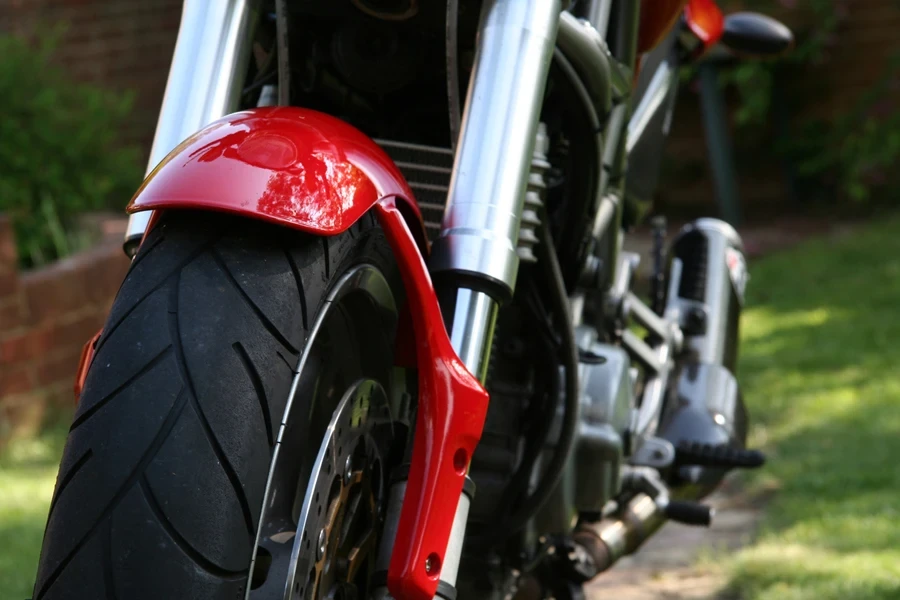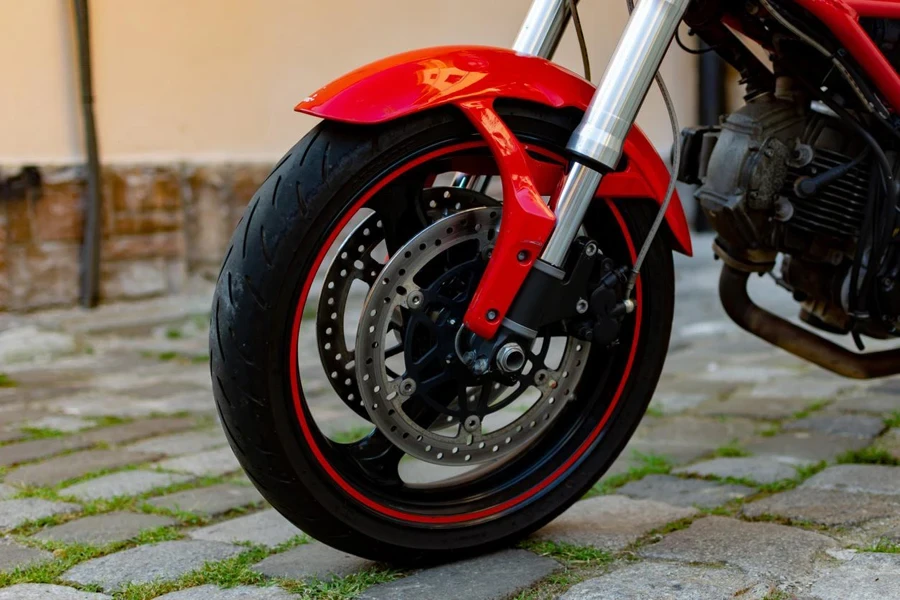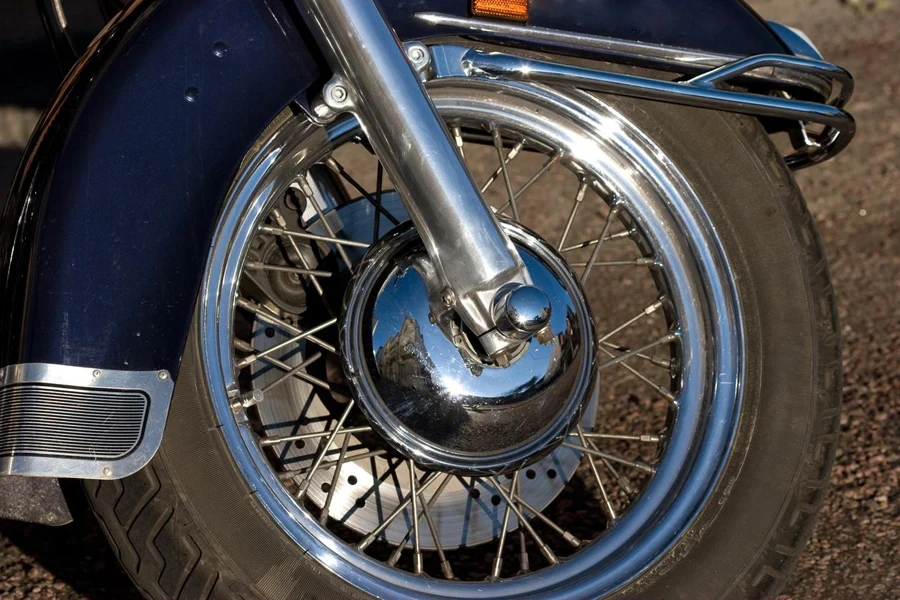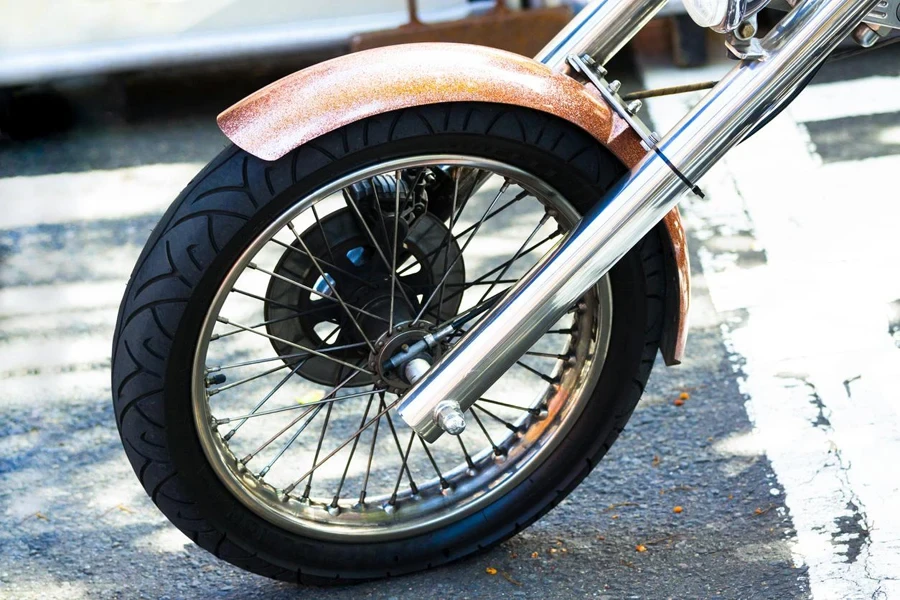Table of Contents
1. Introduction
2. Types of motorcycle fenders and their applications
3. Recent market overview for motorcycle fenders in 2025
4. Key considerations when selecting motorcycle fenders
5. Top motorcycle fender models and their features
6. Conclusion
Introduction
A motorcycle fender is a crucial component designed to protect both the rider and the bike by shielding against debris, water, and mud. In 2025, selecting the right fender goes beyond basic functionality; it is key to enhancing performance, durability, and aesthetic appeal. Whether you need protection for off-road adventures or a stylish look, choosing the right fender for commutes greatly impacts your overall riding satisfaction. This selection ensures protection while complementing the motorcycle’s design and supporting optimal riding conditions.

Types of motorcycle fenders and their applications
Front fenders vs. rear fenders
Motorcycle fenders shield both the rider and the bike from elements such as mud and debris while riding out there in the wild or urban areas. The front fenders are designed to safeguard parts like the engine and riders from getting shot up with muck and grime during your two-wheel adventures. They also help cut through the air while cruising at higher speeds for that extra bit of thrill.
Conversely, rear fenders shield against road splashes and debris propelled by the wheel, which is crucial for bigger and heavier motorcycles. Rear fenders also protect bike passengers. For touring motorcycles, rear fenders are typically designed larger to accommodate the added weight and dimensions of the bike, ensuring that both the rider and the motorcycle are safeguarded from external elements while navigating challenging terrains or unfavorable weather situations.
Custom vs. stock fenders
The distinction between custom and stock fenders is crucial when choosing a motorcycle fender. Stock fenders are the standard parts that come with the motorcycle. They are designed to fit the bike’s specifications perfectly and offer reliable, functional protection with minimal customization. These fenders often have a traditional, neutral design that aligns with the overall aesthetic of the model they accompany.
In contrast, custom fenders provide more flexibility and personalization. Riders often opt for these fenders to elevate the aesthetic of their bike or enhance performance under various riding circumstances. These personalized fenders come in various dimensions and styles, allowing riders to select based on their preferences, like opting for shorter fenders for an appearance or longer ones for added safeguard. The ability to modify the finish, color, and overall design gives custom fenders an edge for those seeking to make their motorcycles stand out or adapt to particular usage.

Recent market overview for motorcycle fenders in 2025
Latest market data
As per the report from Global Market Insight, in 2023, the market for motorcycle fenders amounted to around USD 16.5 billion. The figures suggest that it will reach USD 26.1 billion by 2032. This growth is predicted to occur at a growth rate of 5% due to the escalating interest in two-wheelers and the shift towards environmentally conscious materials and electric motorcycles in markets worldwide.
Current market trends
The worldwide motorcycle fender industry is projected to experience growth by 2025 due to the rising interest in motorcycles across categories such as touring and off-road models. The market expansion is further fueled by technological progress and the increasing popularity of motorcycles as riders seek fenders tailored to these modern models. Customization remains a trend, with riders choosing fenders that improve performance and add style-enhancement elements to their motorcycles. There is a growing focus on lightweight materials such as carbon fiber and aluminum, which offer durability while reducing overall vehicle weight, benefiting both electric and traditional motorcycles.
Environmental concerns and stricter regulations lead to innovations in eco-friendly materials and production processes, further shaping market demand. Moreover, the emergence of interconnected motorcycles plays a role in reshaping the fender design landscape as companies incorporate aerodynamic features and sensor technology into this crucial element.

Key considerations when selecting motorcycle fenders
Durability and resistance
Durability is key when selecting a motorcycle fender. Fenders must withstand various conditions, from weather to hits from debris along the road. Steel and carbon fiber are top choices for their lasting qualities. Steel fenders are a pick for demanding situations, such as touring and off-road biking, thanks to their ability to handle harsh environments. However, they require a coating to prevent rust over time. Carbon fiber fenders, on the other hand, are both strong and lightweight, making them ideal for high-performance motorcycles. This material also provides excellent corrosion resistance, which enhances the fender’s lifespan, especially in wetter climates.
Aesthetic appeal and customization
Aesthetic appeal plays a significant role in the selection process, particularly for riders looking to enhance the overall look of their motorcycles. Custom fenders allow personalizing designs, colors, and finishes to match the bike’s style. Carbon fiber offers performance benefits and a sleek, modern appearance that is increasingly popular among riders. The option to choose from ribbed, smooth, or bobbed designs allows for further customization. Whether it’s a minimalist bobber style or a more elaborate design, custom fenders enable a rider to express individuality while maintaining functionality.
Fitment and installation
Ensuring that the fender fits correctly is crucial for both the functionality and safety of the bike’s fender system. The proper fit of a fender does not just protect the rider and the motorcycle from debris, it also plays a role in enhancing the aerodynamics of the bike. For instance, fenders need to adjust to the tire movement to prevent any obstruction in operation, and rear fenders must safeguard passengers and essential parts like suspension. While universal fenders can be tailored for various models, OEM-fitted ones ensure a perfect fit with minimal adjustments. Moreover, custom-made fenders might require additional hardware or drilling for secure proper installation.

Top motorcycle fender models and their features
The market for motorcycle fenders in 2025 is experiencing a surge in interest for specific fender styles that cater to riders focused on performance and individuals seeking customization choices. This segment showcases the top-selling fender varieties in the market and the characteristics that contribute to their popularity.
Carbon fiber fenders
Carbon fiber fenders are popular because they are light and strong at the time. Performance bikes benefit greatly from these fenders because they help make the bike faster and easier to handle without sacrificing durability. Carbon fiber is also super tough against rust and corrosion; hence, most riders love it because it means low maintenance in the long run. Its sleek and high-tech appearance makes it a hit among folks who want their motorcycles to stand out with a modern vibe. Furthermore, these bumpers are frequently resistant to UV rays, which helps prolong their durability while preserving their appearance.
Steel fenders for durability
Steel fenders made from 14 gauge rolled steel remain popular due to their durability and toughness in heavy-duty and touring motorcycle applications. They are built to endure tough conditions and are well-suited for long-distance rides and off-road adventures. Although heavier than carbon fiber fenders, the extra weight enhances the bike’s stability overall. Steel fenders are also simple to personalize when it comes to colors and coatings to ensure they complement various motorcycle designs effectively.

Custom bobbed and chopped fenders
Bobbed and chopped fenders are gaining popularity in the custom motorcycle market. These shorter fenders offer minimalistic designs that appeal to riders seeking a more stripped-down, classic look. They are particularly favored in the cruiser and bobber segments. Bobbed fenders are often left undrilled, allowing for further customization and adjustment according to the bike’s design. This flexibility in modification makes them a top choice for custom builds and restoration projects, especially for those who prioritize style over full tire coverage.
Universal fitment fenders
Universal fenders cater to a broad market by offering adaptable fitment across multiple motorcycle models. These fenders are designed to be versatile, allowing riders and manufacturers to adjust them to fit different tire sizes and body shapes. This adaptability makes them highly practical for buyers looking to stock parts that serve multiple models. Universal fenders often come in basic designs, but they can be customized or modified to suit various aesthetic preferences, which increases their appeal to a wide range of consumers.
Conclusion
In 2025, selecting the right motorcycle fender is crucial for balancing performance, durability, and style. Whether opting for lightweight carbon fiber fenders for high-performance bikes or robust steel fenders for touring motorcycles, the market offers a variety of top-selling options that cater to different riding needs. Customization continues to drive demand, with bobbed, chopped, and universal fenders allowing for personalized modifications. As material innovations and aesthetic preferences evolve, understanding the key considerations—durability, fitment, and design—helps professionals make informed purchasing decisions that align with both market trends and consumer expectations.



